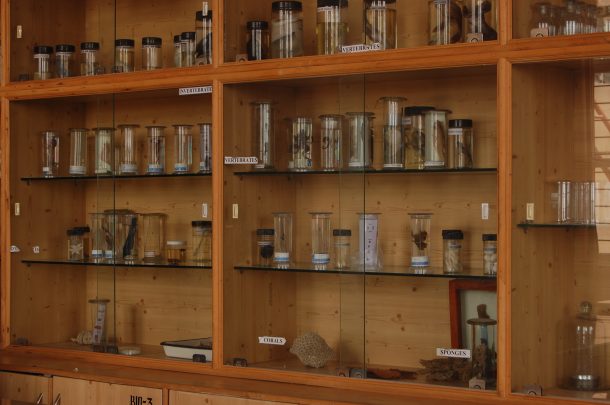 Life, or rather proto-life, first appeared on earth some time around 4500 million years ago. The crust of the earth cooled down, the oceans formed and the atmosphere emerged. All these created conditions favourable for life to begin. Earth’s pre-biotic oceans were very different from today’s. They formed a “hot dilute soup”, which was ideal for the formation of organic compounds.
Life, or rather proto-life, first appeared on earth some time around 4500 million years ago. The crust of the earth cooled down, the oceans formed and the atmosphere emerged. All these created conditions favourable for life to begin. Earth’s pre-biotic oceans were very different from today’s. They formed a “hot dilute soup”, which was ideal for the formation of organic compounds.
First came the self-replicating heavy molecules. Laboratory experiments simulating early earth conditions have been able to recreate some of these molecules, such as nucleobases and amino acids. The process of living matter evolving from self-replicating but nonliving molecules is called biopoesis.
RNA, or ribo-nucleic acid, appeared: the first form of proto-life and the first genetic code carrier. It is at once both a catalyst and a self-reproducing program. How the progression from molecule to nucleic acid exactly came about was unclear. In May 2004, Simon Nicholas Platts proposed the PAH world hypothesis to try to fill in this crucial missing link. Mind you, it’s still more chemistry than biology, yet.
But evolution soon kicks in. Because the conditions and resources necessary for the replication and reproduction of these molecules become scarce. Competition begins. Natural selection prefers those programs that are more likely to survive in the long run. Interestingly, the proteins that the RNA start to create, themselves become more likely candidates to survive the harsh conditions. The RNA thus becomes relegated to simply carrying genetic code. In due course DNA becomes a better candidate to carry genetic code. More importantly, when this genetic material becomes encased in a membrane, it provides a chemical equilibrium and a safer, protected environment.
They thus become the precursors to multi-cellular life on planet earth – protobionts.
It has taken approximately 1 billion years from the time the earth formed, to the time of the first appearance of life on the planet. Nearly another 1 billion years go by before the next gear shift.
Single celled prokaryotes make their appearance. The cells are primitive and have no nucleus in which genetic material can be aggregated. Most bacteria we encounter these days are prokaryotes- but they may not be the same bacteria that existed then.
Evolution may seem slow in our time frames, but it is being pushed rapidly by extreme conditions on earth. The moon’s proximity gives rise to tides a thousand feet high. Hurricane force winds and changes in the pH stimulate evolution.
Another billion years go by before the first eukaryotes evolve. A eukaryote is an organism whose cells contain a nucleus enclosed in a central membrane, containing the genetic material. This is a vast evolutionary leap from the prokaryotes which contain no nucleus.
Now the rate of progress increases. Sexual reproduction kicks in another billion years later. This further stimulates rapid evolution.
4.25 billion years after the earth formed, the first mammals start to appear.
There are several theories on the beginning of life on Earth. So any story is likely to have chinks in the armour, and therefore, challengers.